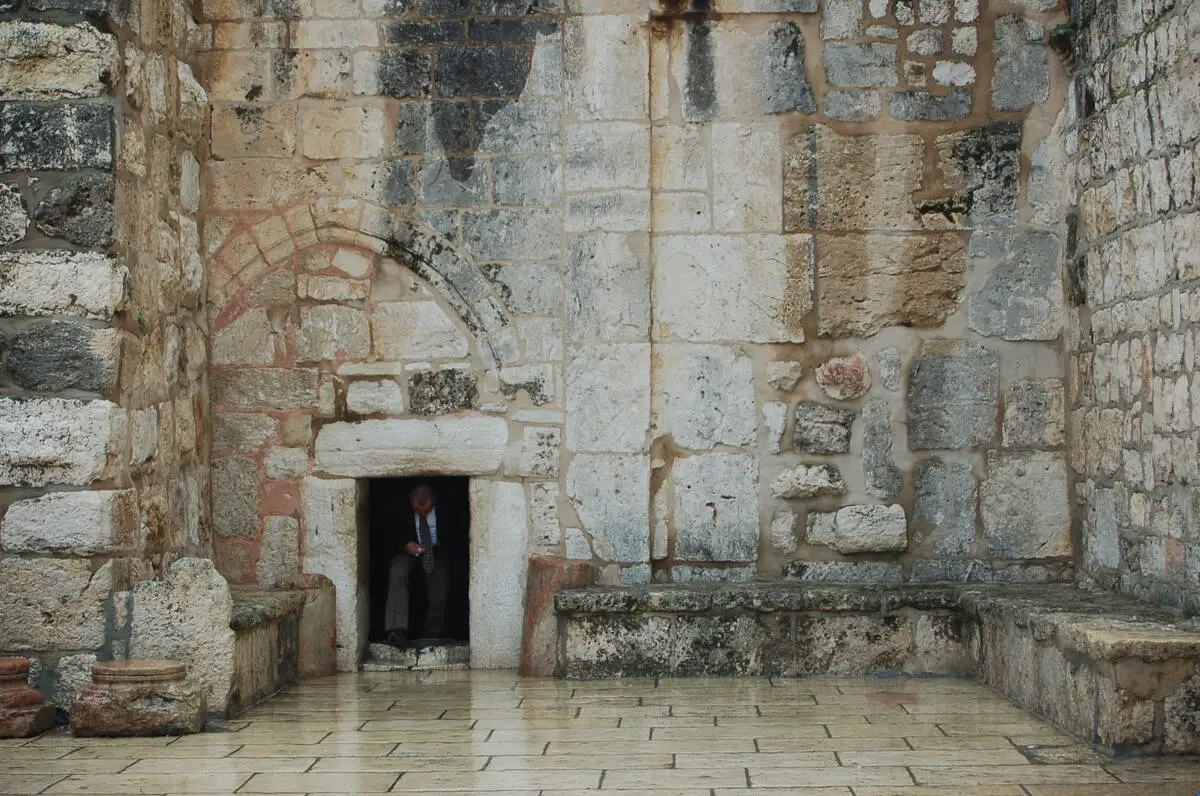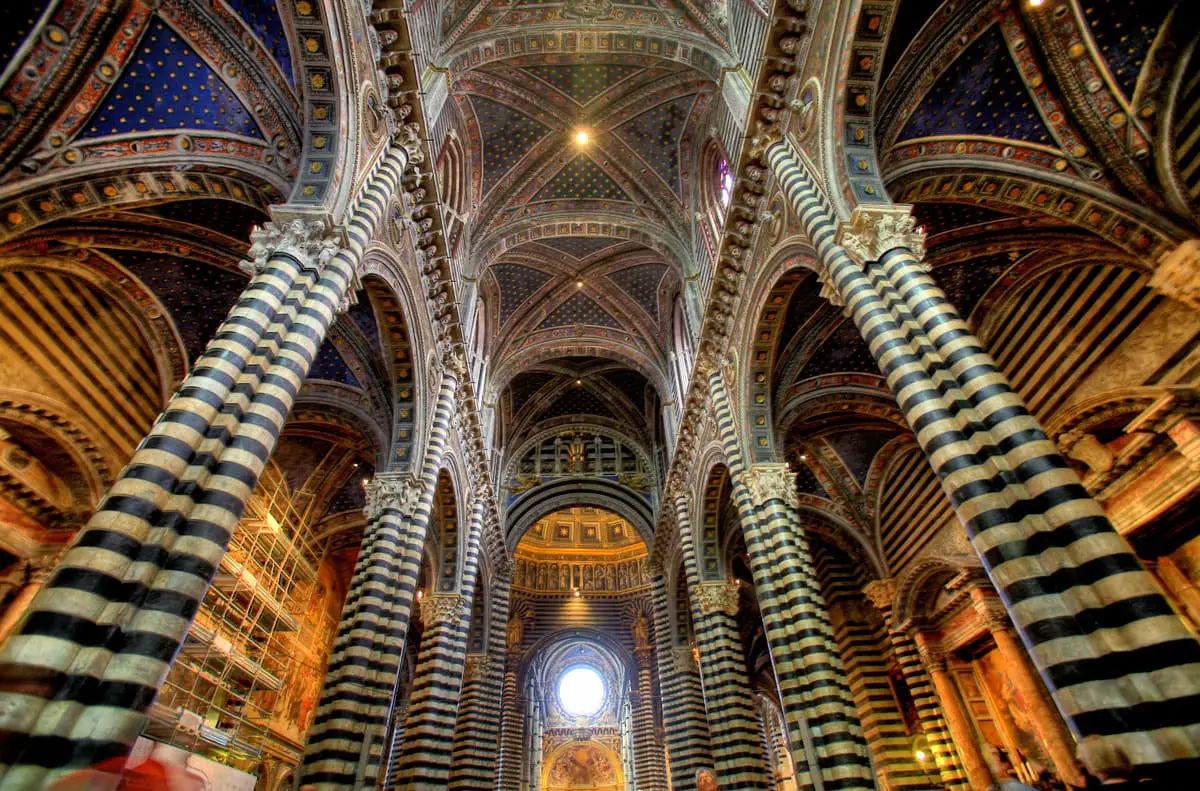World 🢖 Europe 🢖 Italy 🢖 Lazio
Churches 🢔 Religious architecture 🢔 Architectural wonders 🢔 Categories of wonders
Wonder
Archbasilica of St John Lateran
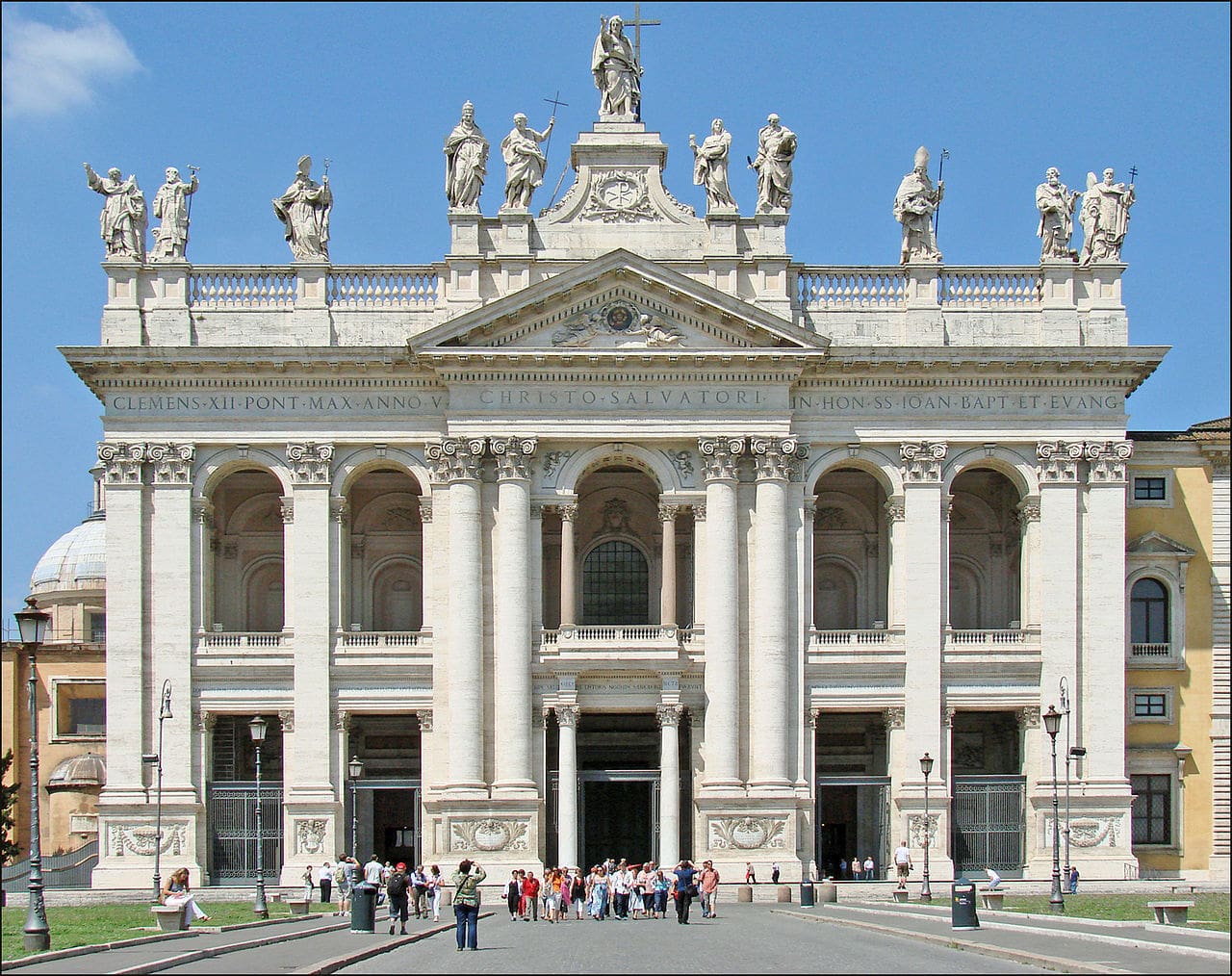
 In short
In short
There is only one archbasilica in the world – Archbasilica of St John Lateran. This could be the most important church in the world, at least for the Catholic Church – although not far from it is the better known and more imposing St. Peter’s Basilica.
Lateran Basilica though is much, much older and has a history unrivaled by any other church in the world.
 59.5%
59.5%
GPS coordinates
Full name
Name in Italian
Alternate names
UNESCO World Heritage status
Architectural style
Architect
Year of construction
Branch of Christianity
Map of the site
If you see this after your page is loaded completely, leafletJS files are missing.
 In detail
In detail
Status of Archbasilica of St John Lateran
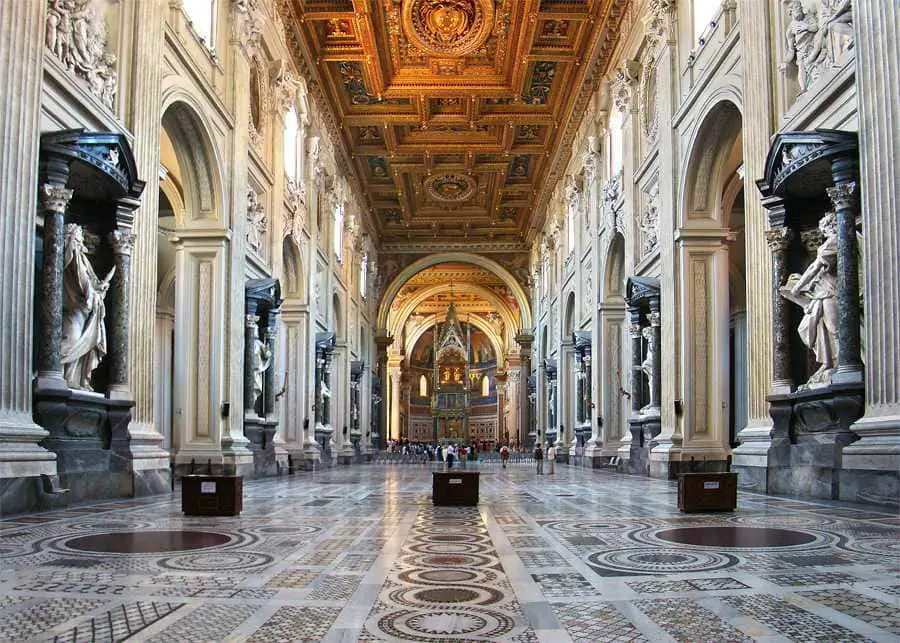
There are four papal major basilicas – all in Rome. The oldest and the highest-ranking of them all (and each of these buildings is very special!) is Archbasilica of St. John Lateran. No other Catholic church in the world is as important, even the St. Peter’s Basilica.
Archbasilica is the seat of the pope and the cathedral church of Rome. It has extraterritorial status from Italy as a property of the Holy See.
This is the oldest public church in Rome and the ecumenical mother church of Catholics.
The status of this magnificent building is testified both by its history and its embellishments and works of art.
History
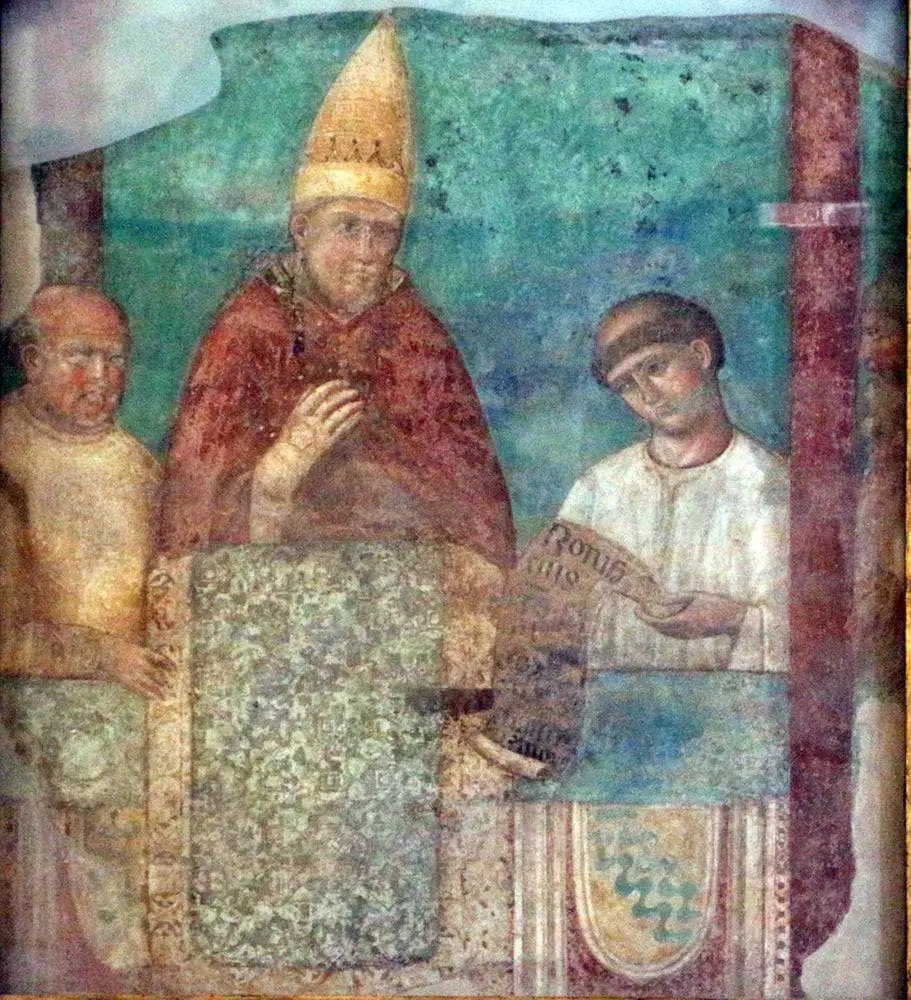
Many structures in Rome have been built over the older buildings, often using parts of other structures. Thus it is very hard to find out – in which year the construction was started. Lateran Basilica is one of such cases – over the last 2000 years, there existed several structures, each influencing the next one.
The timeline of Lateran Basilica shows – this building is truly unique:
- Before common era: part of the current land plot that is now taken by Archbasilica belonged to the influential Laterani family and here stood Lateran Palace.
- 193: in the site of the present basilica in the times of Emperor Septimius Severus was established a Roman fort which was demolished around 312 – but the remnants of this ancient structure still are under the nave of the Archbasilica.
- 307: the Lateran Palace became the property of the Roman Emperor.
- Around 312: Emperor Constantine ordered to build a Christian Basilica at the palace – the first official church building in Rome and one of the oldest in the world. The basilica was dedicated to Christ the Savior.
- Around 313: land plot donated by Constantine to the Bishop of Rome – the future popes.
- 313-318 (324?): Bishop Sylvester I (now recognized as pope) built the basilica at Lateran Palace. The throne of the bishop – cathedra – became a symbol of episcopal authority. As the cathedra of the Bishop of Rome was placed inside the new basilica, it became a “cathedral”. Maybe this was not the first official cathedral in the world – there are several more in the Mediterranean area from these times – but it definitely was among the first ones.
- 410: Archbasilica was looted by the Visigoths.
- 455: Vandals invaded Rome and archbasilica was looted. Before this, the building was splendid and filled with valuables – it had a nickname “Golden Basilica” (Basilica Aurea).
- Around 460: Archbasilica was restored.
- 896: Archbasilica was almost totally destroyed by an earthquake. The new basilica was built in the same dimensions as the previous.
- 904-911: Archbasilica was rebuilt, rededicated to St. John the Baptist by Pope Sergius III.
- 1144: pope Lucius II dedicated the Archbasilica to John the Evangelist. Nevertheless Christ the Savior still was the primary patron of archbasilica.
- 1123, 1139, 1179, 1215, and 1512-1517: five ecumenical councils took place in the Archbasilica and Lateran Palace.
- 1308: fire destroyed the archbasilica and Lateran Palace.
- 1361: fire again destroyes both buildings. Pope was in Avignon in these times and both basilica and palace deteriorated although the pope sent financing for the maintenance and repairs.
- 1370-1378: the rebuilding of Archbasilica of St. John Lateran in its former design.
- 1376: papacy returnes to Rome. This part of Rome was sparsely populated and dangerous. Lateran Basilica and Palace were considered to be not suitable for the pope anymore – buildings were too dilapidated. Popes resided in other basilicas in Rome until the present Palace of the Vatican and Basilica of St. Peter was built in the 16th century.
- 1562-1567: the magnificent, coffered ceiling was made by Flaminio Boulanger. Now the ceiling is adorned with a huge amount of gold.
- 1585-1590: reconstruction of Lateran Basilica and Palace during the papacy of the ambitious Sixtus V. Works were made under the guidance of architect Domenico Fontana. The old Lateran Palace was demolished and a new palace constructed instead.
- 1646-1650: the interior of Basilica was renovated upon orders of Pope Innocent X in 1646-1650. These works were managed by the talented architect Francesco Borromini. Borromini though did not have too much artistic independence: he was asked to keep the coffered ceiling and the old, uneven floor and the apse of the basilica.
- 1718: the twelve niches created by Borromini were filled with Rococo style statues of the Apostles.
- 1733-1735: the magnificent, current facade of the archbasilica was built. This rebuilding was ordered by Pope Clement XII and the competition was fierce – more than 23 architects participated. Most designs were in the popular Baroque style but one excelled as something unusual and innovative: the design of Alessandro Galilei from the same family as Galileo Galilei and one of the first great Neo-Classicism architects. This design was selected as a winner and after the completion of works caused a scandal among the artistic circles in Rome and, at the same time was admired by a new generation of architects in France and Britain. Thus the facade of this ancient building got a very innovative design for its time, making the Lateran Basilica similar to a palace.
- World War II: Lateran Basilica and Palace served as a refuge for Jews and other persecuted people.
Design and relics
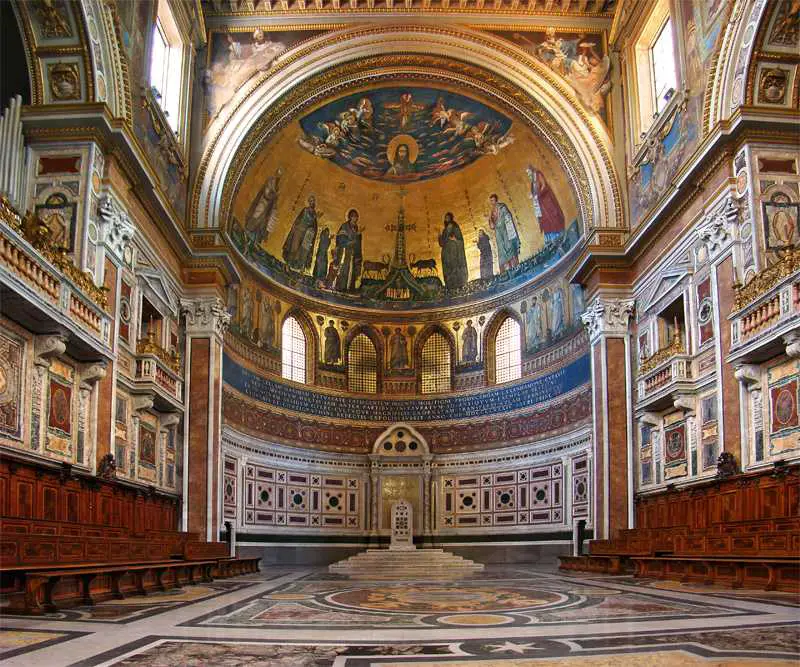
During its long history, Archbasilica has turned into a complex structure with several parts and adjoining buildings. Nevertheless, the main body has retained five aisles, just like in the 4th century.
Six popes are buried in the Lateran Basilica. At least ten more burials of popes were destroyed in the fires during the 14th century and their remnants were gathered and reburied.
Lateran Basilica contains several macabre relics: at the top of the altar is a reliquary that contains purported heads of St. Peter and St. Paul. The altar of the Holy Sacrament contains a supposed table of the Last Supper, a high altar – a piece of wood from St. Peter’s communion table. One more relic is a sample of Jesus’ blood. Well… just try to imagine if all of this is true. Weird indeed.
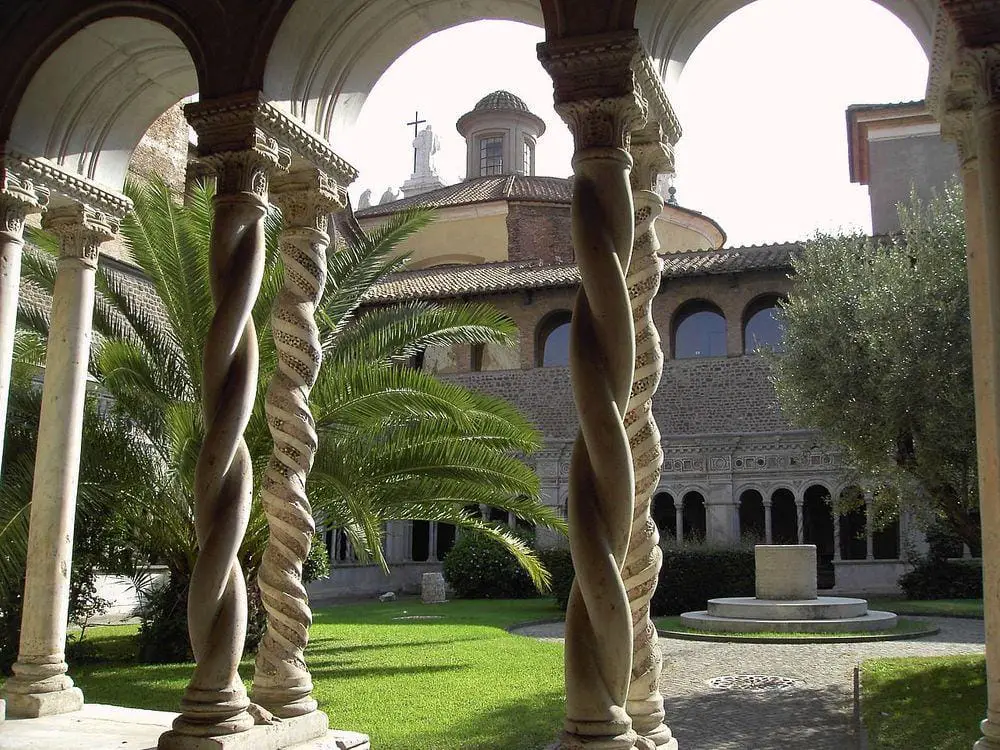
Among the countless embellishments and art values, Archbasilica contains fragments of Giotto’s fresco from 1300: but there are numerous other valuable artifacts of the past and wonderful monuments of art.
Lateran Palace adjoins the Archbasilica but close to it are several more important historical structures: Lateran Obelisk from Ancient Egypt, Lateran Baptistery, Scala Sancta (legendary stairs where Jesus stepped on his way to trial during Passion), and The Tribune.
Especially beautiful is the adjoining St. John Lateran’s Cloister. It was built in the early 13th century and utilized by Augustine priests who were in charge of liturgical ceremonies at the basilica. The cloister was designed by Vassalletto architects – father and son, who used the motives of ancient art. An interesting accent is Solomonic columns and columns twisted around each other – technically complex design.
References
- Arcibasilica Papale San Giovanni in Laterano. Site last visited on 28th December 2018.
- Roberto Piperno, Basilica di S. Giovanni in Laterano from “Rome in the Footsteps of an XVIIIth Century Traveller”. Site last visited on 28th December 2018.
Archbasilica of St. John Lateran is included in the following list:
 Linked articles
Linked articles
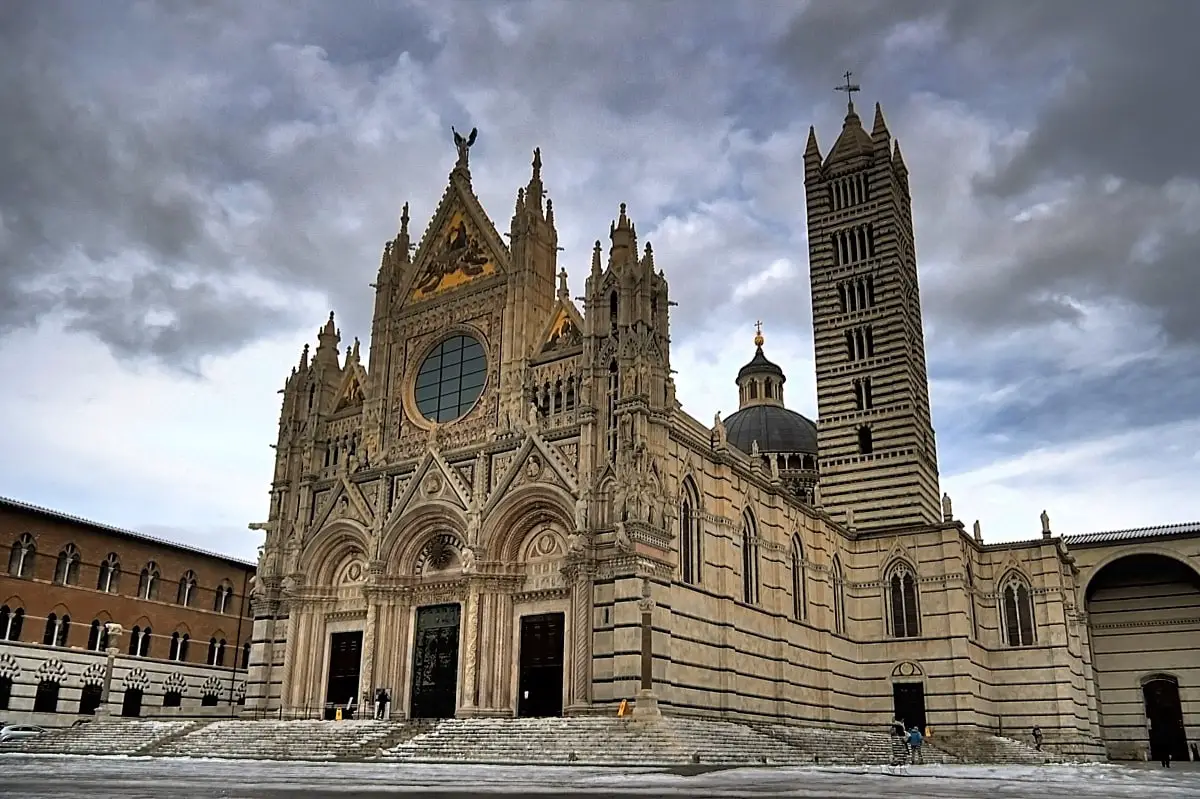
Top 10 most beautiful churches of Italy
This article lists the greatest churches of Italy: the best ones among the hundreds of very interesting buildings. Each of them has unusual and beautiful architecture, great works of art, and with an exciting history that sometimes is 2 thousand years long.
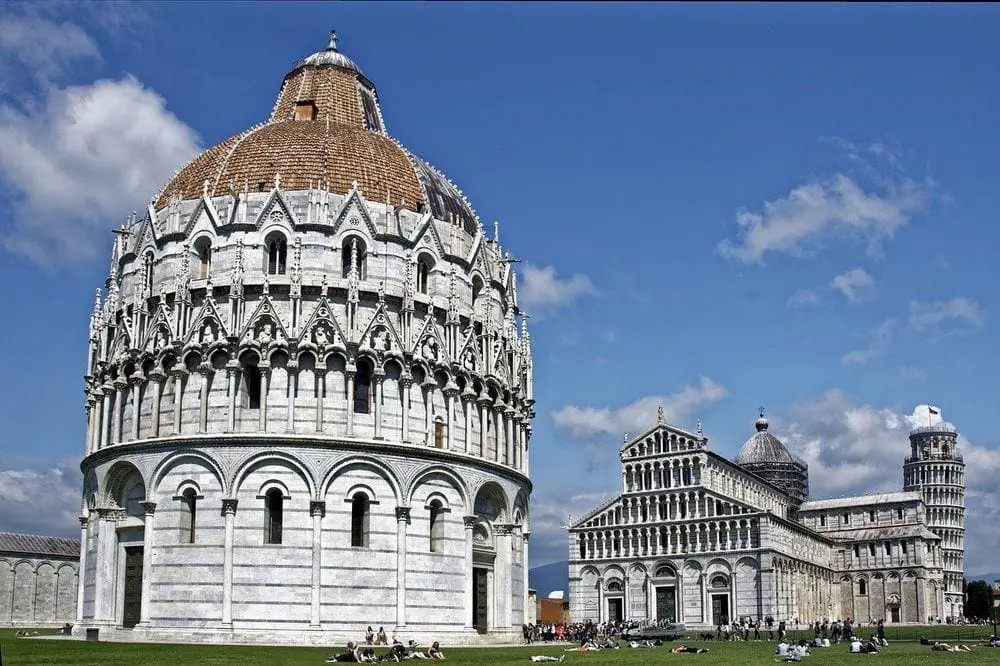
Wonders of Italy
Italy is one of the most popular destinations in the world due to its unsurpassed cultural heritage – this country has got some of the finest monuments of architecture and art in the world.
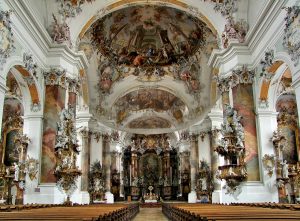
Churches
Throughout the millennia Christian churches have been the epitome of architecture and arts achievements in Western culture, representing it.
 Recommended books
Recommended books
The Pilgrim’s Guide to Rome’s Principal Churches
A guided tour of fifty-one of the most important churches in Rome. Includes a history of each church, descriptions of the interior and exterior, a numbered floor plan, photographs, and details of the church’s spiritual, architectural, and artistic treasures.
The Occult Renaissance Church of Rome
Revisionist historian Michael Hoffman penetrates the sub-strata of the Roman Church after it had departed from fourteen hundred years of Catholic orthodoxy and embraced institutionalized equivocation and deceit, usurious money power, and diabolic occultism. Here is an unprecedented investigation of an epoch of spectacular fraud and labyrinth subterfuge unique in western history.

